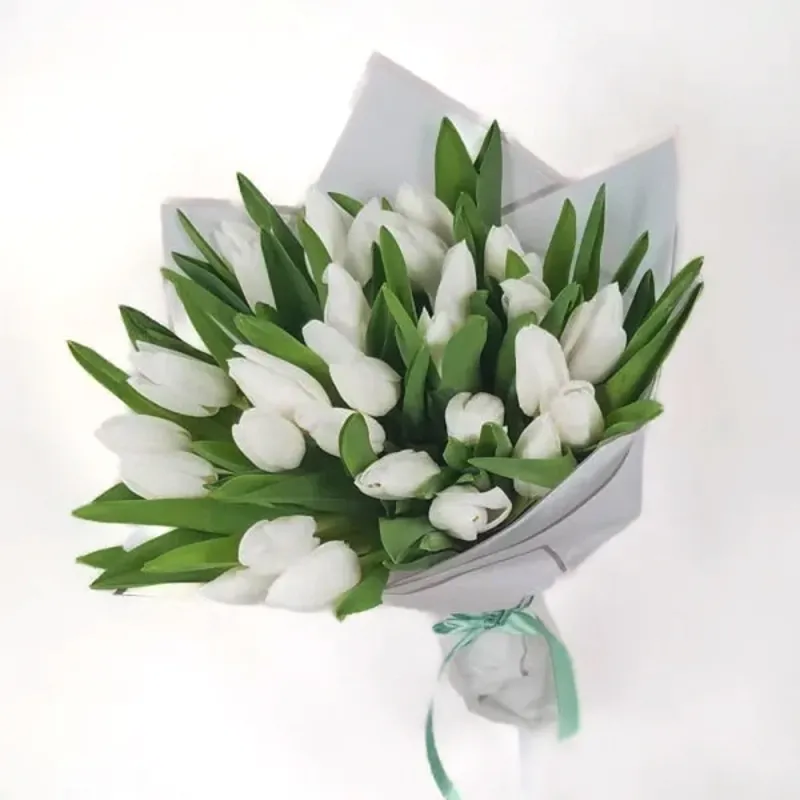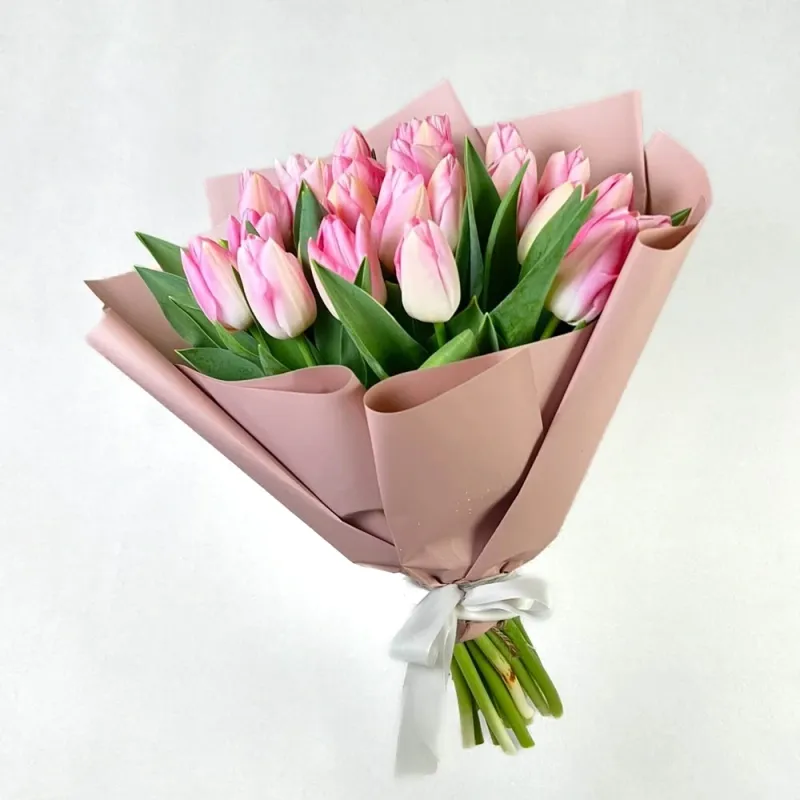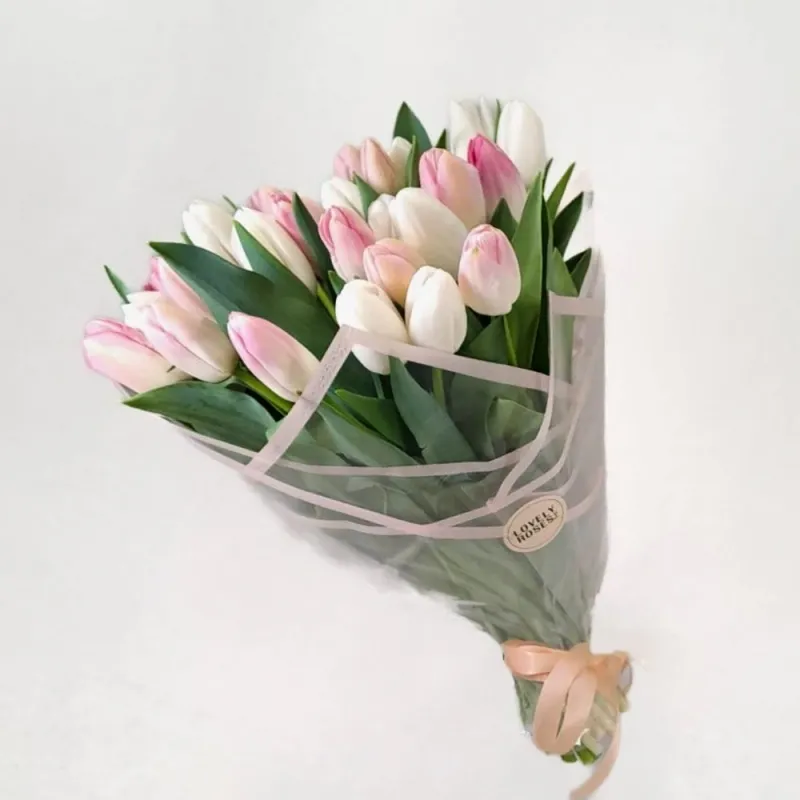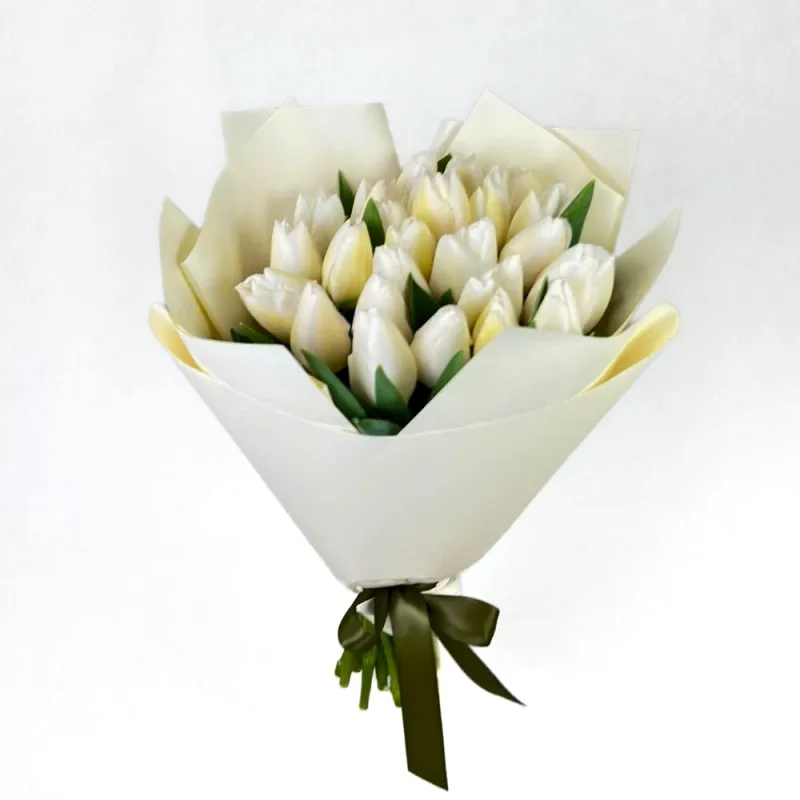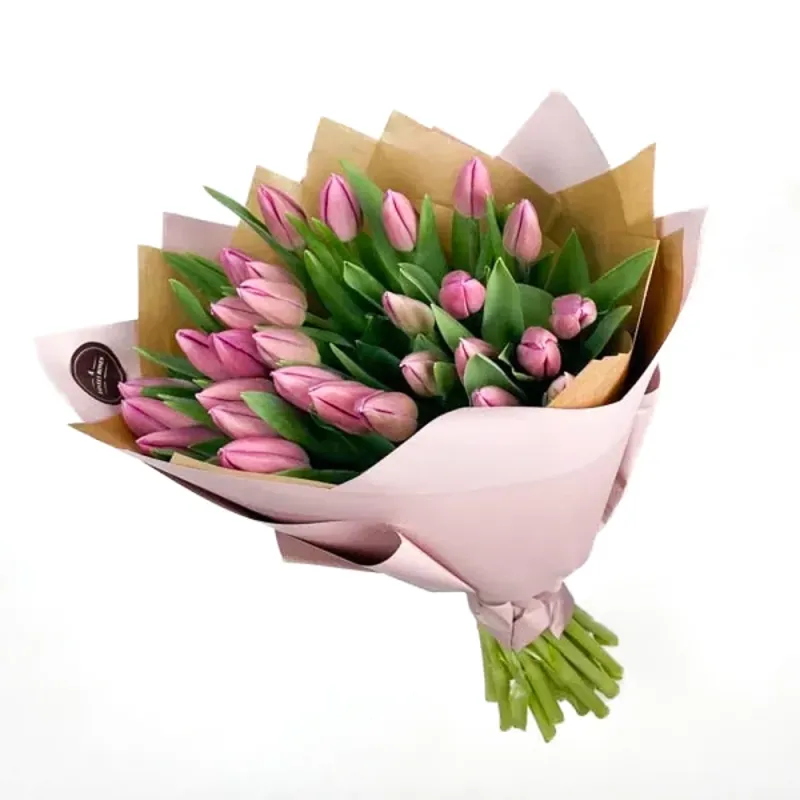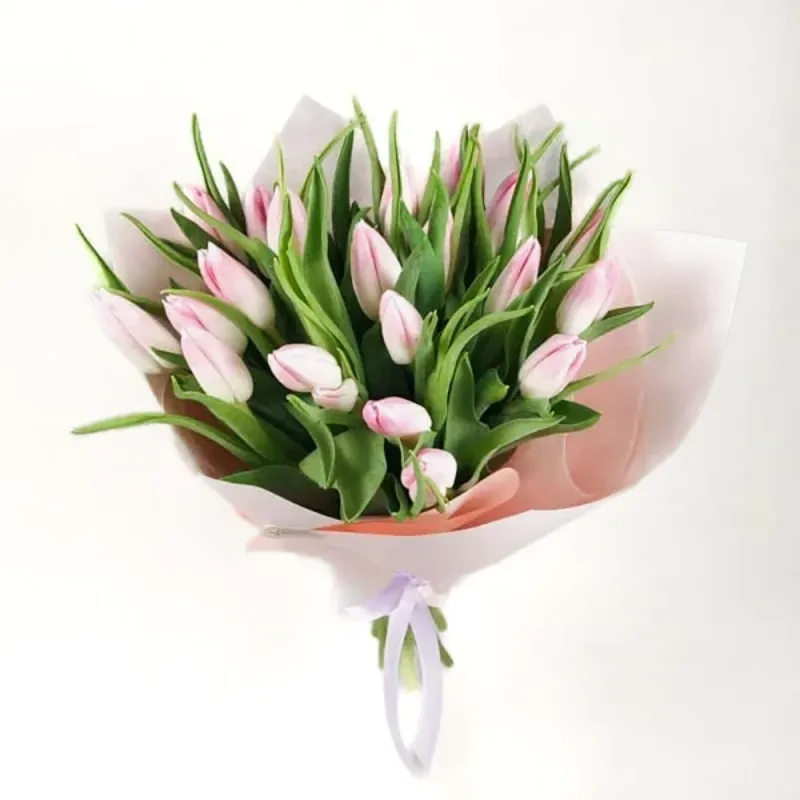The tulip 🌷 season starts in February and ends in April. During this period, the assortment is the widest and the cost is the lowest. Our store presents Dutch flowers, which can be purchased throughout almost the entire year; while during the season, not only imported Dutch but also local ones are available. They sell out instantly, so it's best to place your order in advance.
These flowers are incredibly popular because of their bright and varied colors, perfect shape, crisp freshness, and most importantly, their association with the arrival of spring. In this article we will try to answer the most frequently asked questions about this incredible flower.
Do you have tulips?
In nature, their season lasts from February to April. However, cultivators have managed to extend it, so today we enjoy them all year round. Early flowering has become possible as a result of the development of new varieties and geographical expansion of breeding while making them available even after the season ends - due to new ways to store the cut flowers.
How much do tulips cost?
The price depends on the specific time of the year, as well as the exchange rate of the Lari to EURO. The price for holidays and special days is always higher than usual, it is also higher when out of season. The current price you can see on this page, where we present the latest collection of tulip bouquets. If the season is over, the bouquets will be marked as “pre-order”. In this case, ordering is possible only for the time when the season opens up again.
How long do tulips last in a vase?
The life of a given flower in a vase varies from several to 10 days and depends on many factors:
- Season of purchase - non-frozen flowers last longer
- Cutting time, sometimes flowers sent to the stores are already ripe at the time of cutting, and sometimes in still i buds
- The time the flower has already spent in the store before you purchased it
- Conditions of storing - keeping them in the refrigerator is a must
- Depending on how it's taken care of: whether the steps are cut or not, and specifically cut how, whether water is changed and the vase is washed daily
- Whether tulips are local or imported (local flowers cut while still in buds can last longer)
How to choose the tulips that last the longest?
- When the head is still in a bud state, the flower will be very small, and at the base of the flower, it will still be green. The height of the bud can be as small as just 4 cm and such flowers will last much longer, although they are not as impressive as ripe ones when you bring them home, they will grow in height, the bud will swell every day, gradually turning into a large one, and in general, they will last much longer.
- In young, not very mature flowers, when taken out of the refrigerator, the petals of the buds do not open
- Leaves and stems should be bright green, not yellow or spotted
- In Dutch tulips are cut early, and the heads are hiding below the leaves
How to distinguish Dutch tulips from local ones?
Local flowers are often cut already too ripe, not needing to travel a long distance, and looking big (which is important for their immediate sale), are cut riper, so that the leaves remain far below the stem, looking almost "empty", when no leaves are framing the head. In imported flowers, the heads are often slightly lower than the leaves. Also, local tulips' heads often are different in size, both in height and in diameter, which introduces a little chaos into the symmetry of the bouquet.
How to keep flowers in a vase longer?
Since tulips are early spring flowers, they do much better in cooler conditions, so they will last much longer in cold temperatures.
How to trim stems? / What should the cut be?
It is better to remove all leaves that touch the water; they compete with the stem that feeds the bud for the water and can also begin to rot, increasing the bacteria volume. It is necessary to cut the stems with a sharp knife with a straight cut. If the cut is not straight the weight of the stem will crush over it and block water access. You can even make several micro cuts, so that water flowers easier. It is not recommended to use pruners or scissors to trim such delicate stems.
What can you add to prolong the vase's life?
Bacteria will inevitably grow in the water in the vase. In order to eliminate it, you can choose one of the following: add 1 tablet of aspirin or activatedcoal, a little citric acid, or vinegar. Additionally, you can use sugar. There is also a special additive for flowers that destroys bacteria available to buy from some of the flower shops. The water must be changed daily and refilled with those additives. All this can be done but is not necessary. If the tulips are fresh, just change the water, wash the vase, remove damaged and yellowing leaves, and trim about 1 cm from the stems daily (flowers continue to grow in water all the time, so don’t be afraid to make them shorter). The buds will become heavier, and it will become difficult for the stem to carry the weight of the head, so it's best to choose a taller vase so its edges can hold the grown tulip head.
Where to put my vase?
Tulips love cool weather because they are one of the very first to begin to bloom after the flowers' winter hibernation. When they just begin to rise, it is still very cold. It's better to avoid direct rays of sun, air conditioners and heaters located nearby. Also, do not place flowers next to fruits, especially citrus ones, as they will begin to wither much faster.
How to care for flowers?
Best put them in cool water, up to 21 degrees (you can even add some ice). As is the case with all flowers, the vase must be very clean - the bottom and walls of the vase regularly washed. Pour up to 6 centimeters, so, on the one hand, the leaves will not contribute to rotting, and on the other, the tulips will not have time to “drink” the entire volume in just a couple of days.
Is it possible to speed up the opening of buds?
It is recommended to trim approx. 3 centimeters from the stem and place them in warm, up to 35 degrees, water. It is better to place the vase closer to the light, but not in direct sunlight. In a day the tulips will open. If buds have not yet started adding some color, it may take several days before they open. However, keep in mind, that, the speeding up of the opening of buds, reduces their lifespan.
How to straighten tulip stems?
A flower that has “drunk” water in a bent position will retain it, unless the stem is cut, straightened, and wrapped in paper or newspaper up to the head, leaving just enough paper at the bottom so that the legs fit in the water, and put in a high straight vase. Now the flowers need to be placed in cold water for a couple of hours (if there is no cold water, add some ice). In a while, the stems will straighten, but then again, under the weight of the swollen head and weakened softer stems, they will bend again. It is almost impossible to straighten the heads of peony-like tulips, whose heads are very large and heavy.
Can tulips be combined with other flowers?
Challenging but it is possible. Due to the fact that tulips continue to grow in a vase, some florists, when creating mixed bouquets, place them a little deeper than the other flowers. If the bouquet was disassembled and all the flowers were placed separately in a vase, then it is better to trim the tulips a little more than the other flowers. As far as flower arrangments in a box or a basket, the florists don’t really like to use floral sponge since tulips change shape, opening and rising in the warmth, thus changing the “florist originally assigned” place in the composition, which can unexpectedly take on a completely different look. Also, due to the delicate structure of the stem, it is quite difficult for them to “drink” water from the sponge.
What other flowers can tulips be combined within a bouquet?
Usually irises, roses, freesias or with eustomas. Remember that it is better to set tulips in the bouquet initially lower than other flowers since they will continue to grow in the water and reach other flowers in a few days.
Why do the heads of the tulips fall?
If the flowers are initially fresh, then the reason may be that air bubbles, rising up the stem, block the access of water to the bud. In this case, they suggest to pierce with the thin needle just below the head to release excess air.
